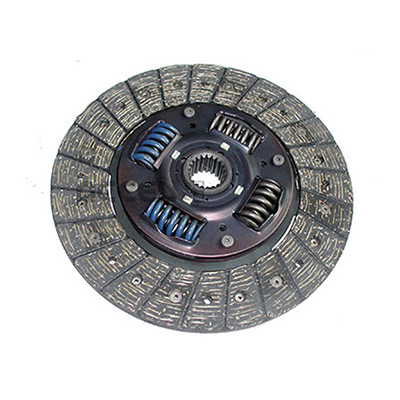- Arabic
- French
- Russian
- Spanish
- Portuguese
- Turkish
- Armenian
- English
- Albanian
- Amharic
- Azerbaijani
- Basque
- Belarusian
- Bengali
- Bosnian
- Bulgarian
- Catalan
- Cebuano
- Corsican
- Croatian
- Czech
- Danish
- Dutch
- Afrikaans
- Esperanto
- Estonian
- Finnish
- Frisian
- Galician
- Georgian
- German
- Greek
- Gujarati
- Haitian Creole
- hausa
- hawaiian
- Hebrew
- Hindi
- Miao
- Hungarian
- Icelandic
- igbo
- Indonesian
- irish
- Italian
- Japanese
- Javanese
- Kannada
- kazakh
- Khmer
- Rwandese
- Korean
- Kurdish
- Kyrgyz
- Lao
- Latin
- Latvian
- Lithuanian
- Luxembourgish
- Macedonian
- Malgashi
- Malay
- Malayalam
- Maltese
- Maori
- Marathi
- Mongolian
- Myanmar
- Nepali
- Norwegian
- Norwegian
- Occitan
- Pashto
- Persian
- Polish
- Punjabi
- Romanian
- Samoan
- Scottish Gaelic
- Serbian
- Sesotho
- Shona
- Sindhi
- Sinhala
- Slovak
- Slovenian
- Somali
- Sundanese
- Swahili
- Swedish
- Tagalog
- Tajik
- Tamil
- Tatar
- Telugu
- Thai
- Turkmen
- Ukrainian
- Urdu
- Uighur
- Uzbek
- Vietnamese
- Welsh
- Bantu
- Yiddish
- Yoruba
- Zulu
సెప్టెం . 10, 2024 21:56 Back to list
mechanical drives and belting
Mechanical Drives and Belting An Overview
Mechanical drives and belting are essential components in various industrial applications, providing a means to transfer power from one part of a machine to another
. Understanding these systems is crucial for engineers, technicians, and anyone involved in mechanical design and maintenance.Mechanical drives consist of a variety of components that transmit motion and force. Common types of drives include gear drives, belt drives, chain drives, and direct drives. Each system has its own advantages and disadvantages, making them suitable for different applications. For instance, gear drives are known for their high efficiency and compactness, while belt drives are favored for their ability to handle large distances and dampen vibrations.
Belt drives, specifically, have been widely used in various industries due to their simplicity and versatility. They typically consist of a belt that wraps around two or more pulleys. As one pulley rotates, it drives the belt, which in turn rotates the other pulley. They can be classified into several categories, including flat belts, V-belts, and synchronous belts, each designed for particular applications and load requirements.
Flat belts are the simplest type, often made of leather, rubber, or synthetic materials, and are used in applications requiring high speed and low torque. V-belts, characterized by their trapezoidal cross-section, offer better grip and can accommodate heavier loads. They are commonly found in automotive engines and industrial machinery. Lastly, synchronous belts, which have teeth that engage with corresponding grooves on the pulleys, provide precise timing and are typically used in high-speed applications like robotics and conveyor systems.
mechanical drives and belting

One of the key advantages of mechanical drives and belting is their ability to transmit power over distances with minimal energy loss. Belt drives, in particular, can absorb shocks and vibrations, which not only enhances the longevity of the machinery but also improves overall performance. This makes them particularly useful in applications involving heavy loads or where mechanical parts are subject to frequent stress.
However, mechanical drives are not without their challenges. Proper tensioning of the belt is crucial to avoid slippage, which can lead to inefficiencies and increased wear. Regular maintenance checks are necessary to ensure the alignment of pulleys and the condition of the belts themselves. Over time, belts can wear out, leading to reduced performance or even failure, necessitating replacement to maintain operational efficiency.
In recent years, advancements in materials science and engineering have led to the development of stronger, more durable belts capable of withstanding higher loads and extreme conditions. Innovations in drive design, such as adjustable pulleys and modular systems, have also enhanced versatility and ease of maintenance.
In conclusion, mechanical drives and belting play a vital role in the functioning of modern machinery across numerous industries. Their ability to efficiently transmit power, accommodate varying loads, and withstand adverse operating conditions ensures their continued relevance in mechanical design. Understanding the intricacies of these systems is essential for anyone involved in the field, enabling them to make informed decisions regarding equipment selection, maintenance practices, and overall machine optimization.
-
Korean Auto Parts Timing Belt 24312-37500 For Hyundai/Kia
NewsMar.07,2025
-
7PK2300 90916-T2024 RIBBED BELT POLY V BELT PK BELT
NewsMar.07,2025
-
Chinese Auto Belt Factory 310-2M-22 For BMW/Mercedes-Benz
NewsMar.07,2025
-
Chinese Auto Belt Factory 310-2M-22 For BMW/Mercedes-Benz
NewsMar.07,2025
-
90916-02660 PK Belt 6PK1680 For Toyota
NewsMar.07,2025
-
drive belt serpentine belt
NewsMar.07,2025

